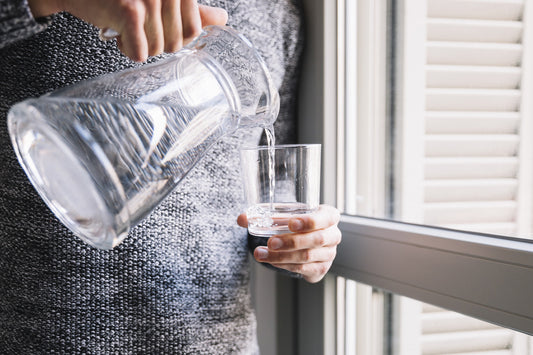Water purification is a topic that has garnered significant attention over the years. With increasing concerns about water quality and the environment, many are turning to natural methods of purification. One such method that stands out is the use of charcoal. In this comprehensive guide, we'll explore the intricacies of crafting a charcoal water filter, its benefits, and its historical context.
Introduction: The Magic of Charcoal
Charcoal, a blackened substance resulting from burning organic material in the absence of air, has properties that make it a potent purifying agent. But what exactly gives charcoal this magical ability?
The Science Behind Charcoal's Purifying Power
At a microscopic level, charcoal is porous, providing a vast surface area. This porosity allows it to attract and trap a wide range of impurities, from chemicals to pathogens. When water passes through charcoal, these impurities are absorbed, leaving the water clean and pure.
Charcoal in Historical Context
The use of charcoal as a purifying agent isn't new. Ancient civilizations, from the Egyptians to indigenous tribes, recognized its benefits. They used it for medicinal purposes, to purify drinking water, and even to preserve food. This historical context underscores charcoal's timeless value in purification.

Gathering the Essentials
Creating a charcoal water filter requires some basic materials, each playing a crucial role in the filtration process.
Charcoal: Beyond the BBQ
While many associate charcoal with barbecues, its use in water purification is profound. For our filter, it's essential to source charcoal from hardwood or extinguished fires. This ensures it's free from harmful residues and is of the highest quality.
Pine Needles: An Unexpected Ally
Pine needles, often overlooked, play a dual role in our filter. They act as a barrier, preventing the fine charcoal particles from seeping into the purified water. Additionally, they infuse the water with a subtle pine flavor, enhancing the drinking experience.
The Role of Plastic Bottles in Filtration
Plastic bottles serve as the framework for our filter. One bottle holds the charcoal and pine needles, while the other collects the purified water. This separation is vital to prevent cross-contamination.

Crafting the Perfect Filter
With our materials in hand, it's time to craft the filter.
Bottle Preparation: More Than Just a Container
The bottle that holds the charcoal and pine needles requires some modifications. A small hole is drilled into its lid, allowing the water to drip through. This hole is the exit point for the purified water.
Pine Needles: The Unsung Hero of Filtration
Before adding them to the filter, the pine needles are finely chopped. This increases their surface area, ensuring they effectively prevent charcoal particles from contaminating the water.
The Art of Grinding Charcoal
Grinding the charcoal is a meticulous process. It needs to be ground into a fine powder, increasing its surface area and ensuring maximum impurity absorption.
Layering: A Deep Dive into Effective Filtration
The filter bottle is filled with alternating layers of ground charcoal and pine needles. This layering technique ensures even filtration and optimal water purification.

Image by KawikaFilms from Pixabay
The Filtration Process: A Detailed Look
Water Collection: Techniques and Tips
Water collection is an art in itself. It's essential to use a separate container to collect water from the source. This ensures that there's no cross-contamination during the filtration process.
The Filtration Timeline: Patience Pays Off
Filtration is a slow process. The initial grayish-black tint from the charcoal will eventually clear up, leaving behind pristine water. This slow pace ensures thorough purification.
Decoding the Color Changes During Filtration
The initial grayish-black color indicates the presence of charcoal particles in the water. As the filtration progresses, these particles settle, and the water becomes clear.
Results: The Purity and Taste of Charcoal-Filtered Water
The Taste Test: A Sensory Experience
The end product is a sensory delight. The water is not just pure but also carries a hint of pine, making it refreshing.
Health and Wellness: The Benefits of Charcoal-Purified Water
Charcoal-filtered water is free from pollutants, heavy metals, and most pathogens. Drinking it can lead to better digestion, detoxification, and overall well-being.

Image by Manuel Darío Fuentes Hernández from Pixabay
Conclusion: Embracing the Power of DIY Filtration
Crafting a charcoal water filter is empowering. It's a testament to nature's incredible purifying powers and our ability to harness them. With just a few simple materials, anyone can access clean, refreshing water.
FAQs
How often should the charcoal in the filter be replaced?
Depending on usage, replace the charcoal after purifying approximately 100 gallons of water.
Is the pine flavor in the water strong?
The flavor is subtle, adding a refreshing twist to the water.
Can this filter be used for other liquids?
This filter is designed specifically for water. Using it for other liquids might not yield the desired results.
How long does the filtration process take?
Depending on the volume, it can take a few hours to a day.
Is charcoal-filtered water safe for daily consumption?
Yes, it's not only safe but also beneficial for health due to its purity.
Photo by Callum Shaw on Unsplash
People also search for Hot Water Dispensers





